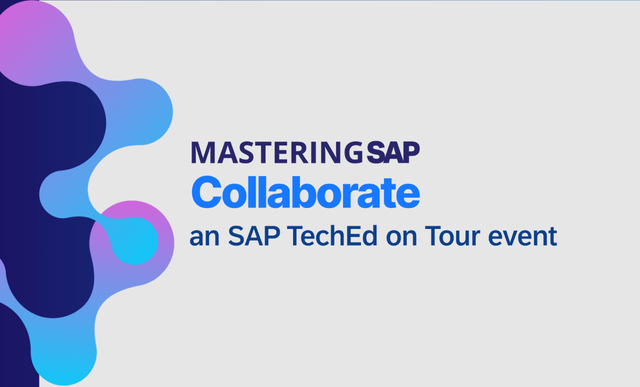SAP Asset Management
Filter By
Browse By
- SAP Analytics and AI
- SAP Application Development and Integration
- All SAP Application Development and Integration
- SAP ABAP
- SAP ABAP Development Tools
- SAP ABAP Test Cockpit
- SAP API Management
- SAP BAPI
- SAP Basis
- SAP BRF
- SAP Business Application Studio
- SAP CMS
- SAP Design Studio
- SAP Development Tools
- SAP DevOps
- SAP EAI
- SAP EDI
- SAP Extension Suite
- SAP Fiori
- SAP Fiori Elements
- SAP Integration Suite
- SAP Low Code Application Development
- SAP Low Code Automation
- SAP Netweaver
- SAP Release Management
- SAP UI5
- SAP Web Application Server
- SAP Web IDE
- SAP Business Process Management
- SAP Center of Excellence
- SAP CIO
- SAP Customer Experience
- SAP Data and Data Management
- All SAP Data and Data Management
- SAP BW
- SAP BW/4HANA
- SAP Crystal Reports
- SAP Data Archiving
- SAP Data Center
- SAP Data Governance
- SAP Data Integration
- SAP Data Migration
- SAP Data Quality
- SAP Data Services
- SAP Data Strategy
- SAP Data Visualization
- SAP Data Warehouse Cloud
- SAP DMS
- SAP Document Control
- SAP EIM
- SAP ETL
- SAP ETL Tools
- SAP HANA
- SAP HANA Administration
- SAP HANA Deployment Infrastructure
- SAP HANA Studio
- SAP Master Data
- SAP Master Data Governance
- SAP MDM
- SAP Enterprise Architect
- SAP Enterprise Asset Management
- SAP ERP
- SAP Finance
- All SAP Finance
- SAP Accounting
- SAP AR AP
- SAP Asset Accounting
- SAP Billing Systems
- SAP BPC
- SAP BRIM
- SAP Cash Management
- SAP Central Finance
- SAP Controlling
- SAP COPA
- SAP Cost Center Accounting
- SAP Currency Risk
- SAP e-invoicing
- SAP FICO
- SAP Finance Automation
- SAP Advanced Financial Closing
- SAP Financial Consolidation
- SAP Financial Planning
- SAP FX Risk
- SAP General Ledger
- SAP Global Tax Management
- SAP Hyperion
- SAP Order to Cash
- SAP Payment Processing
- SAP Profitability Analysis
- SAP Rebate Management
- SAP S/4HANA Finance
- SAP SWIFT Compliance
- SAP Treasury Management
- SAP Universal Journal
- SAP Governance Risk and Compliance
- SAP Human Capital Management
- SAP Intelligent Technologies
- SAP Platform and Technology
- All SAP Platform and Technology
- SAP Business Technology Platform
- SAP Cloud
- SAP Cloud Connector
- SAP Cloud Integration Platform
- SAP Cloud Migration
- SAP Cloud Platform
- SAP Cloud Providers
- SAP Cloud Strategy
- SAP Digital Signature
- SAP Container Platform
- SAP HANA Enterprise Cloud
- SAP Digital Asset Management
- SAP Smart Forms
- SAP HEC
- SAP Digital Integration Hub
- SAP Hyperscalers
- SAP Infrastructure
- SAP Messaging
- SAP Quality and Testing
- SAP Security
- SAP Spend Management
- SAP Supply Chain Management
- All SAP Supply Chain Management
- SAP APO
- SAP Asset Management
- SAP Business Network
- SAP Digital Manufacturing Cloud
- SAP Digital Twin
- SAP EWM
- SAP IBP
- SAP Inventory Management
- SAP Label Printing
- SAP Logistics
- SAP Manufacturing
- SAP Manufacturing Automation
- SAP MES
- SAP MII
- SAP MM
- SAP MRO
- SAP MRP
- SAP Order Management
- SAP Plant Maintenance
- SAP PLM
- SAP Production Planning
- SAP S&OP
- SAP SD
- SAP SPM
- SAP Supply Chain Planning
- SAP Track and Trace
- SAP Transportation Management
- SAP System Administration
What is Enterprise Asset Management?
Enterprise asset management (EAM) focuses on managing the maintenance of an organization’s physical assets throughout their lifecycle. Technology now plays a greater and more critical role in this endeavor as asset downtime can lead to significant revenue and brand repercussions.
SAP Intelligent Asset Management
SAP offers SAP Intelligent Asset Management, a group of solutions that “enable an organization to use sensor technologies and predictive analytics to improve asset health.” The four solutions and some of their capabilities include:
What is Enterprise Asset Management?
Enterprise asset management (EAM) focuses on managing the maintenance of an organization’s physical assets throughout their lifecycle. Technology now plays a greater and more critical role in this endeavor as asset downtime can lead to significant revenue and brand repercussions.
SAP Intelligent Asset Management
SAP offers SAP Intelligent Asset Management, a group of solutions that “enable an organization to use sensor technologies and predictive analytics to improve asset health.” The four solutions and some of their capabilities include:
- SAP Asset Intelligence Network
— Collaborative EAM
— Automated equipment tracking
- SAP Predictive Asset Insights
— 360-degree view of assets
— Advanced predictive analytics
- SAP Mobile Asset Management
— Work order management
— Cloud-based deployment
- SAP Asset Strategy and Performance Management
— Asset information management
— Failure modes and effects analysis
Apply Industry 4.0 technologies for advanced enterprise asset management execution. Sources cite the increased use of artificial intelligence and machine learning in EAM applications to better automate and predict maintenance events. Through data analysis, companies can glean predictions and recommendations that provide greater insights for EAM decision making. Through the use of the cloud, companies can more accurately track their assets and assess their conditions in real time.
Consider vendor consignment for your EAM spare parts procurement strategy. Vendor consignment enables an organization to hold inventory in its warehouse without paying the vendor until it’s consumed. What are the advantages of this strategy? In the case of spare parts for physical assets, it allows for a reduction in the company’s own inventory stock while creating fewer steps in the procure-to-pay process. Read this articleto gain a full understanding of setting up vendor consignment as part of EAM for spare parts in SAP ERP Central Component (SAP ECC).
Implement a robust EAM strategy for fleet maintenance to ensure availability and reliability. For many companies, fleet management is critical for servicing customers and meeting their expectations. For example, SBB AG, the national railway company of Switzerland, required a powerful solution to optimize the maintenance of its rail fleet. The company implemented SAP’s Intelligent Asset Management solutions that enabled real-time monitoring of tracks and rail cars for a “reliability centered” approach to its maintenance process.
398 results
-

 Premium
Premium
Handle Partially Reclaimable VAT with Pro-Rata VAT Functionality in Your SAP System
Reading time: 27 mins
Many organizations in the EU use Value Added Tax (VAT) on certain sales. However, not all sales allow VAT charges. If you’re a company providing products that are both VAT-eligible and VAT-ineligible, how do you account for this in your system? See how to set up and customize pro-rata VAT in your SAP system. Key...…
-

Is Your SAP Data a Strategic Asset or a Digital Anchor?
Reading time: 3 mins
To remain competitive in the digital economy, organizations must shift from traditional SAP data extraction to creating governed, reusable Data Products within a real-time Data Core Architecture, enabling immediate insights and intelligent automation while turning data into a strategic asset.
-

Digitization and the Intelligent Enterprise
Reading time: 8 mins
Tanja Rueckert was named SAP Executive Vice President, Line of Business Digital Assets and IoT in April 2016, with end-to-end responsibility for products and innovation for SAP digital assets and IoT solutions in the areas of manufacturing, supply chain manufacturing, asset management, IoT, and Industry 4.0. With SAP since 1997, Rueckert’s present focus is helping…
-
-

- SAP Financial Consolidation
 Premium
Premium
Creating a Real-Time Cash Flow Report Using SAP S/4HANA Group Reporting
Reading time: 16 mins
The significant complexities involved in creating a real-time cash flow report using your SAP system can prevent companies from including the level of detail that they need. Understanding the cash flow process and new reporting functionalities in SAP S/4HANA can help organizations simplify these complexities. This article provides several updates for creating a cash flow…
-

 Premium
Premium
Consignment Process in Enterprise Asset Management Reduces Spare Parts Inventory
Reading time: 13 mins
Vendor consignment, a standard functionality in materials management within Enterprise Asset Management (EAM), enables companies to reduce their inventory of spare parts. Learn how to execute vendor consignment using your own stock as well as materials from multiple consignment vendors. Key Concept Vendor consignment is a standard functionality in materials management (MM) wherein you purchase...…
-

 Premium
Premium
Reconcile Differing Financial Periods with Fiscal Year Change
Reading time: 10 mins
Restructure your financial and special periods to unify your financial reporting under one fiscal year. Key Concept The fiscal year variant is a key configuration parameter that you can use to define: The number of posting periods and special periods in a fiscal year How the system determines posting periods when posting transactions Fiscal year...…
-

SAP Data Warehouse & BW Path to the Cloud
Reading time: 6 mins
SAP Data Warehouse Cloud has been around now as part of the analytics & data portfolio at SAP for around 2 years. Membership Required You must be a member to access this content.View Membership LevelsAlready a member? Log in here
-
-

SAP AI – Powering the Digital Supply Chains
Reading time: 4 mins
AI is not new to supply chain management. Many companies are already using AI to resolve supply chain challenges like sales and operations planning and other supply chain data pools to manage demand fluctuations, supply constraints, production scheduling, and dynamic distribution. Data reveals that AI-enabled supply-chain management has allowed early adopters to improve logistics costs…
-

Predictive Solutions for Optimized Asset Maintenance
Reading time: 3 mins
Enhance your asset management with cutting-edge Predictive Maintenance solutions tailored for the manufacturing industry. Predictive Maintenance utilizes advanced data analysis and machine learning techniques to anticipate machine failures, boosting reliability, minimizing breakdowns, and slashing maintenance costs. By proactively addressing potential issues, companies can ensure uninterrupted operations, maximize productivity, and extend the lifespan of equipment. Discover…
-

- SAP S/4HANA
 Premium
Premium
Understand Mandatory Changes and Key Enhancements Introduced in SAP S/4HANA New Asset Accounting and Their Business Benefits
Click Here to View the Session Post. In SAP S/4HANA, SAP has enhanced the posting logic and has enabled tighter integration between SAP S/4HANA General Ledger and the New Asset Accounting. You will: Learn more about mandatory changes introduced in the SAP S/4HANA New Asset Accounting. Explore new posting logic using operational vs. valuation parts...…
Become a Member
Unlimited access to thousands of resources for SAP-specific expertise that can only be found here.
Become a Partner
Access exclusive SAP insights, expert marketing strategies, and high-value services including research reports, webinars, and buyers' guides, all designed to boost your campaign ROI by up to 50% within the SAP ecosystem.
Upcoming Events
-

Mastering SAP Collaborate, an SAP TechEd on Tour event
November 12 - 14, 2025
Sydney, New South Wales
Australia
View Event
Related Vendors
Your request has been successfully sent

